Co2 Atmospheric
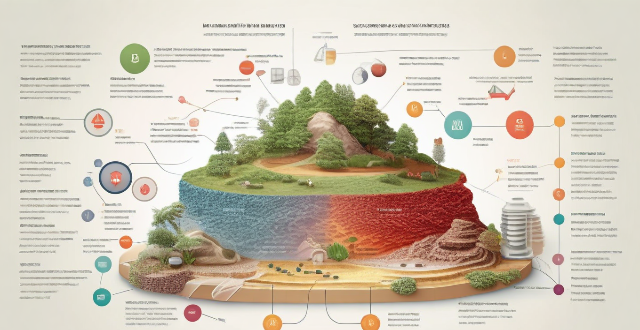
How long will it take for carbon sequestration to have a noticeable effect on atmospheric CO2 levels ?
Carbon sequestration is a process that aims to reduce atmospheric CO2 levels by capturing and storing carbon dioxide. The effectiveness of this process depends on various factors such as the rate of carbon sequestration, global emissions reduction efforts, and the health of natural carbon sinks. In the short term, it is unlikely that carbon sequestration alone will have a noticeable effect on atmospheric CO2 levels. However, in the medium to long term, if significant investments are made in scaling up carbon sequestration technologies and reducing global CO2 emissions, some noticeable effects may begin to emerge. These could include slower rates of CO2 accumulation, improved air quality, reduced global warming, and restoration of natural ecosystems. Therefore, sustained investments in carbon sequestration and other climate mitigation strategies can help achieve long-term reductions in atmospheric CO2 levels and mitigate the effects of climate change.

How do climate models account for factors such as ocean currents, atmospheric pressure, and solar radiation ?
Climate models are complex mathematical representations of the Earth's climate system, designed to simulate and understand the behavior of various components such as ocean currents, atmospheric pressure, and solar radiation. These factors play a crucial role in shaping our planet's climate, and their interactions are essential for accurate climate predictions. Ocean currents act as conveyor belts for heat, moving it from the equator towards the poles and helping to regulate global temperatures. Climate models use fluid dynamics equations to simulate the movement of water in the oceans, and observations from satellites and buoys are integrated into models to improve the accuracy of ocean current simulations. Atmospheric pressure influences weather patterns and is a key driver of wind systems around the globe. Numerical Weather Prediction (NWP) Models solve the Navier-Stokes equations to simulate atmospheric pressure changes over time, while Global Climate Models (GCMs) incorporate principles of thermodynamics and fluid dynamics to predict how pressure variations will impact climate. Solar radiation provides the primary energy source that drives Earth's climate system. Radiative Transfer Models (RTMs) calculate how solar radiation interacts with the atmosphere and Earth's surface, while Spectral Irradiance Models estimate the amount of solar energy reaching Earth based on sunspot activity and other solar cycles. Coupled Models combine RTMs with atmospheric and oceanic models to understand the full impact of solar radiation on climate.

What role does deforestation play in climate change ?
The Role of Deforestation in Climate Change Deforestation contributes to climate change by reducing the Earth's capacity to absorb CO2 and releasing stored carbon back into the atmosphere. This process exacerbates the greenhouse effect, leading to global warming. Key points include: - Loss of Carbon Sinks: Trees act as natural carbon sinks, capturing and storing CO2. When forests are destroyed, these carbon sinks are lost. - Release of Stored Carbon: Deforestation releases the carbon stored in trees back into the atmosphere, increasing atmospheric CO2 levels. - Biodiversity Loss: Forests are home to a vast array of species. Deforestation leads to habitat destruction and loss of biodiversity. - Soil Erosion and Degradation: Trees help maintain soil quality. Without trees, soil can become degraded, reducing its ability to store carbon. - Albedo Effect: Forests have a darker surface than bare ground, meaning they absorb more sunlight and heat. When forests are replaced with lighter-colored surfaces like grasslands or croplands, the albedo (reflectivity) of the land increases. - Feedback Loops: Deforestation can create feedback loops that exacerbate climate change. For example, as temperatures rise due to increased CO2 levels, it becomes harder for some forests to survive, leading to further deforestation and more CO2 emissions. To combat the role of deforestation in climate change, strategies such as reforestation and afforestation, sustainable forestry practices, protection of intact forests, promotion of agroforestry, and public awareness and education can be employed.

Is carbon offsetting effective in reducing greenhouse gas emissions ?
Carbon offsetting is a strategy to compensate for CO2 emissions by investing in projects that reduce, avoid, or absorb an equivalent amount of CO2 elsewhere. While it can provide immediate action and support clean projects, there's a lack of standardization and potential for perverse incentives. Effectiveness depends on project quality and organizational integrity. It should be part of a broader strategy, not seen as a silver bullet.

Is carbon sequestration a viable solution to combat climate change ?
Carbon sequestration can help reduce atmospheric CO2 levels and support renewable energy sources, but it faces technical feasibility, economic costs, storage capacity, and potential risks. It should be part of a comprehensive strategy to combat climate change.
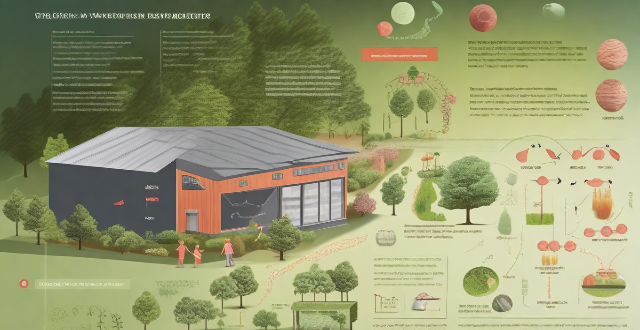
What are the causes of the greenhouse effect ?
In this article, we explore the natural and human-intensified causes of the greenhouse effect and its potential consequences. The greenhouse effect is a process where certain atmospheric gases trap heat from the sun, warming the Earth's surface. Human activities such as burning fossil fuels, deforestation, and agricultural practices have increased the levels of these gases, leading to an intensified greenhouse effect and contributing to global warming. The consequences of an intensified greenhouse effect include rising temperatures, melting ice caps and glaciers, extreme weather events, ecosystem disruption, and impacts on human health. To address these challenges, collective action is needed to reduce greenhouse gas emissions and transition to sustainable practices.

How much carbon dioxide can be sequestered through different methods ?
The amount of carbon dioxide that can be sequestered varies significantly depending on the method and site conditions. Different methods include geological storage, ocean storage, and terrestrial storage, each with different potentials and technical requirements for CO2 sequestration. Geological storage is one of the most promising methods for long-term storage of CO2. It involves injecting and storing CO2 deep underground, typically in saline formations, depleted oil and gas reservoirs, and unmineable coal seams. The potential for CO2 storage in these geological structures is influenced by various factors such as the size, depth, and permeability of the formations, as well as the existence of impermeable cap rock to contain the CO2. Deep saline formations are porous and permeable rocks filled with saltwater that can store CO2 in various forms such as free gas, dissolved in brine, or mineralized after reacting with the host rock. Depleted oil and gas reservoirs offer another option for CO2 storage. After hydrocarbon extraction, these fields have remaining pore space that can be used to inject and store CO2. Unlike saline formations, they often have pre-existing infrastructure for drilling and injection, which can reduce the cost of storage. Unmineable coal seams, also known as coal bed methane (CBM) reservoirs, can store CO2 through a process called enhanced coal bed methane recovery. In this process, injecting CO2 into coal seams displaces methane, which can be recovered as a energy source while sequestering the CO2. Ocean storage involves dissolving CO2 in seawater at great depths where it remains isolated from the atmosphere. This method relies on either natural processes like ocean upwellings or engineering techniques such as direct injection or pipeline delivery systems. While the exact storage capacity is difficult to estimate due to complex ocean dynamics, studies suggest that the global ocean could theoretically absorb thousands of gigatons of CO2. Terrestrial storage focuses on enhancing the natural processes by which ecosystems capture and store carbon. This includes reforestation, afforestation, and soil management practices that increase carbon stocks in vegetation and soils. The potential for terrestrial storage is significant but varies widely depending on factors like climate, soil type, and land use practices. Globally, it is estimated that forests alone could potentially sequester hundreds of gigatons of CO2 over several decades.

How can carbon capture technology be scaled up to address global climate change ?
The article discusses the challenges and strategies associated with scaling up carbon capture technology (CCT) to mitigate global climate change. The challenges include high costs, technological limitations, infrastructure and logistics issues, and regulatory and legal frameworks. To overcome these challenges, strategies such as policy and economic incentives, technological innovation, infrastructure development, public-private partnerships, and international cooperation are proposed. Scaling up CCT is crucial in reducing atmospheric CO2 levels and combating global climate change.

What is carbon capture and how does it work ?
Carbon capture, a technology to reduce CO2 emissions from industrial processes and power generation facilities, comprises three main types: post-combustion, oxy-fuel combustion, and pre-combustion. Each method captures CO2 differently, and the captured gas can be stored or used for other purposes. Carbon capture offers benefits such as reducing greenhouse gas emissions and supporting the transition to a low-carbon economy but faces challenges like high costs and energy requirements.

What are some of the most effective methods for carbon sequestration ?
Carbon sequestration refers to the process of capturing and storing carbon dioxide (CO2) from the atmosphere to mitigate its effects on climate change. There are several effective methods for carbon sequestration, including afforestation and reforestation, soil carbon sequestration, biochar production, ocean fertilization, and direct air capture (DAC). Afforestation and reforestation involve planting new trees or replacing existing ones in deforested areas, while soil carbon sequestration involves increasing the amount of organic matter in soil by adding compost, manure, or other organic materials. Biochar production involves creating a type of charcoal made from plant materials that is added to soil to improve its fertility and water-holding capacity. Ocean fertilization involves adding iron or other nutrients to the ocean to stimulate the growth of phytoplankton, which absorb CO2 through photosynthesis. Direct air capture involves using machines to capture CO2 directly from the atmosphere and then store it underground or in other long-term storage solutions.
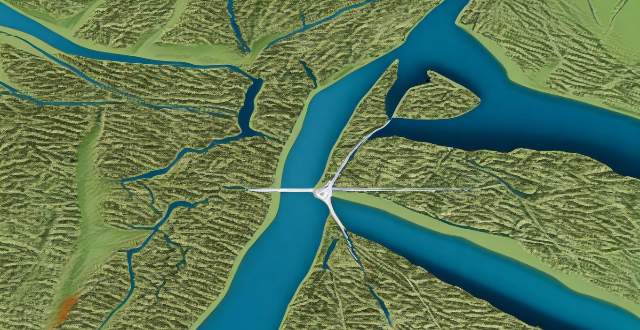
What are some examples of geoengineering techniques ?
Geoengineering techniques aim to counteract climate change through large-scale interventions in the Earth's climate system. These techniques include solar radiation management (SRM) methods like stratospheric aerosol injection and space sunshades, as well as carbon dioxide removal (CDR) strategies such as direct air capture (DAC), ocean fertilization, bioenergy with carbon capture and storage (BECCS), enhanced weathering, forestation and reforestation, and soil carbon sequestration. Other techniques involve albedo modification on Earth and atmospheric aerosol spraying. Despite their potential, these methods pose significant risks and uncertainties, necessitating further research before widespread use.

Can carbon capture help us achieve our climate goals ?
Carbon capture and storage (CCS) has the potential to mitigate climate change by capturing CO2 emissions from power plants and industrial processes, preventing them from entering the atmosphere. The captured CO2 can be transported to a suitable location for long-term storage or used for enhanced oil recovery. However, CCS technology faces challenges such as high costs, energy losses, and public acceptance issues. While it is not a silver bullet, CCS could play a valuable role in reducing greenhouse gas emissions when integrated with renewable energy strategies and energy efficiency measures.

How does deforestation affect global emission levels and what can be done about it ?
Deforestation significantly contributes to global emission levels, primarily through the release of carbon dioxide (CO2) and other greenhouse gases. When trees are cut down or burned, the carbon they have absorbed from the atmosphere during their lifetime is released back into the air. This process exacerbates climate change by increasing the concentration of atmospheric CO2 and other greenhouse gases, which trap heat in the Earth's atmosphere. To mitigate the effects of deforestation on global emissions, various strategies can be implemented, including reforestation, sustainable forest management, reducing demand for forest products, promoting eco-friendly alternatives, strengthening laws and policies, and raising public awareness about the importance of forests in mitigating climate change. By taking these steps, it is possible to reduce the contribution of deforestation to global emissions and work towards a healthier planet.

What are some examples of carbon offset projects ?
Carbon offset projects are initiatives designed to reduce or offset the emission of carbon dioxide (CO2) and other greenhouse gases into the atmosphere. These projects aim to mitigate the impacts of climate change by investing in activities that remove CO2 from the atmosphere or prevent its release in the first place. In this guide, we will explore some examples of carbon offset projects and how they contribute to the global effort to combat climate change.

Can carbon sequestration help to restore degraded ecosystems ?
Carbon sequestration can play a significant role in restoring degraded ecosystems by enhancing biodiversity, improving soil health, mitigating climate change, and providing ecosystem services. It should be part of a broader strategy that includes sustainable land use practices, conservation efforts, and reduction of greenhouse gas emissions.

Are diesel hybrid vehicles better for the environment than regular diesel vehicles ?
Diesel hybrid vehicles, which combine a diesel engine with an electric motor, have the potential to be more environmentally friendly than regular diesel vehicles. They can offer improved fuel economy and reduced emissions of CO2 and particulate matter. However, the production of batteries for hybrid vehicles can result in higher upstream CO2 emissions, and advanced emission control systems are needed to significantly reduce NOx emissions. A comprehensive lifecycle analysis that takes into account all factors would provide a clearer picture of the environmental benefits of diesel hybrid vehicles compared to regular diesel vehicles.

How do deforestation and forest degradation contribute to global warming ?
Deforestation and forest degradation significantly contribute to global warming by reducing carbon sequestration, increasing greenhouse gas emissions, altering the albedo effect, causing biodiversity loss, impacting the water cycle, triggering feedback loops, and posing mitigation and adaptation challenges. These processes also have economic and social impacts, such as displacement of indigenous peoples. Efforts to reduce deforestation and promote sustainable forest management are crucial in combating global warming.
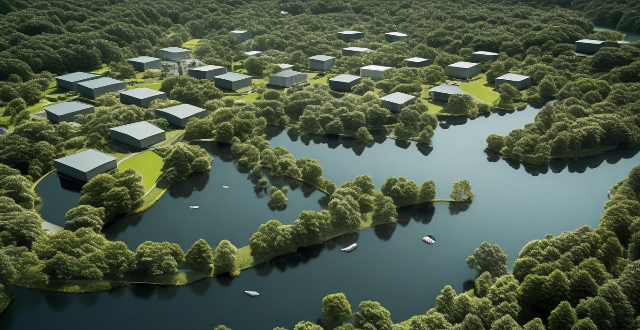
How effective is geoengineering in combating climate change ?
Geoengineering, the large-scale manipulation of the environment to combat climate change, has potential benefits and risks. It includes methods like Solar Radiation Management (SRM) and Carbon Dioxide Removal (CDR), which could theoretically offset global warming and lower atmospheric CO2 levels, respectively. However, geoengineering is not a solution to the root cause of climate change, carries uncertain side effects, and raises equity and ethical concerns. Its effectiveness is also yet to be proven at a relevant scale. Therefore, while research into geoengineering should continue with caution, it should not replace the urgent need for global greenhouse gas emission reduction and adaptation strategies.
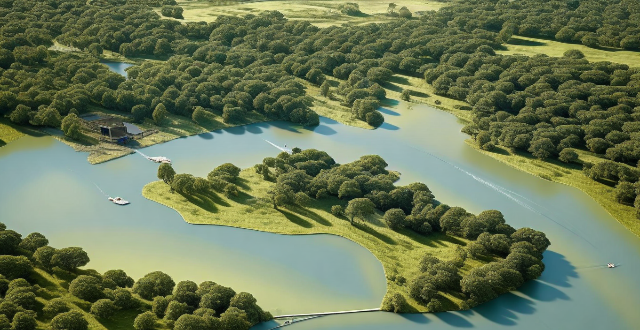
What role does deforestation play in the occurrence of extreme weather events ?
Deforestation contributes significantly to extreme weather events by altering climate regulation, reducing biodiversity, causing soil erosion and landslides, and modifying water cycles. To mitigate these impacts, strategies such as reforestation, sustainable forestry practices, ecosystem restoration projects, public awareness campaigns, and policy interventions must be implemented.

What are the primary causes of global warming ?
The primary causes of global warming include the increase in greenhouse gases, especially carbon dioxide, due to activities like burning fossil fuels and deforestation. Industrial processes, agricultural practices, land use changes, poor waste management, population growth, and urbanization also contribute significantly. Natural factors such as volcanic eruptions and solar radiation variations play a minor role compared to human activities.

Can ecological protection areas help mitigate the impacts of climate change ?
Ecological protection areas can mitigate climate change impacts by carbon sequestration, habitat preservation, water conservation, soil erosion control, and nutrient cycling. These areas safeguard biodiversity, protect natural resources, and preserve ecosystem functions. They help reduce atmospheric CO2 levels, provide refuge for species adapting to changing environmental conditions, maintain stable water levels, filter pollutants from water sources, control soil erosion, and promote nutrient cycling processes. Supporting and expanding ecological protection areas is crucial for a sustainable future.

What role do deforestation and forest fires play in global warming ?
Deforestation and forest fires significantly contribute to global warming by increasing greenhouse gas concentrations, altering Earth's reflectivity, and disrupting natural carbon cycles and ecosystem services.

What is the greenhouse effect ?
The greenhouse effect is a natural process that warms the Earth's surface through the trapping of heat by greenhouse gases. These gases include carbon dioxide (CO2), methane (CH4), and nitrous oxide (N2O), which are released by various human activities and natural processes. The greenhouse effect is essential for life on Earth, but human-induced enhancement of this effect has led to global warming and associated environmental issues.

How do human activities contribute to climate change ?
The text discusses the significant impact of human activities on climate change, primarily through the emission of greenhouse gases (GHGs) from various sources like burning of fossil fuels in transportation and energy production, deforestation, agricultural practices, industrial processes, and building construction. It also highlights potential solutions to mitigate these effects, such as using renewable energy, improving energy efficiency, reforestation, adopting sustainable agriculture practices, and reducing waste.

What role do trees play in natural carbon sequestration ?
The text discusses the role of trees in natural carbon sequestration, a process that involves the removal and storage of carbon dioxide from the atmosphere. Trees absorb CO2 through photosynthesis and store it in their biomass, contributing to soil organic matter and acting as carbon sinks. Responsible forest management practices and preservation of existing forests are essential for maximizing the potential of these ecosystems for carbon sequestration and mitigating climate change.
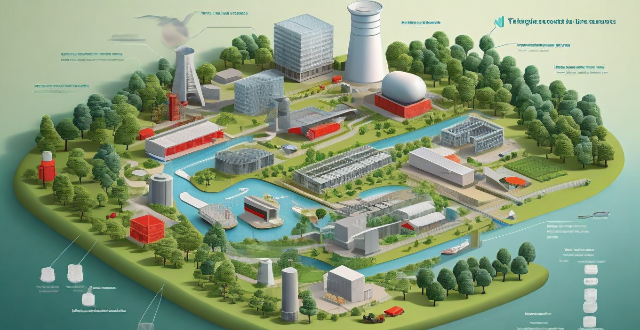
How do industrial activities influence climate change ?
Industrial activities significantly impact climate change by emitting greenhouse gases like CO2, CH4, and N2O, contributing to deforestation, relying on fossil fuels for energy, and producing waste. These activities also affect transportation and logistics, leading to further emissions. While some industrial processes release cooling aerosols, they cause other environmental issues. Technological advancements and policy regulations aim to mitigate these impacts by promoting renewable energy, efficiency improvements, and carbon capture.

What are the main causes of climate change ?
The main causes of climate change include both natural factors and human activities. Natural causes such as solar variability, volcanic eruptions, and orbital changes have influenced Earth's climate in the past but are not responsible for current global warming trends. Human activities, including greenhouse gas emissions from burning fossil fuels, deforestation, industrial processes, agricultural practices, and urbanization with increased transportation needs, are the primary drivers of recent global warming. Addressing these human-induced factors is essential to mitigate further climate change impacts.

What are some examples of gases that contribute to the greenhouse effect ?
The greenhouse effect is a natural process that warms the Earth's surface. Human activities have increased the concentration of certain gases in the atmosphere, leading to an enhanced greenhouse effect and global warming. Major greenhouse gases include carbon dioxide (CO2), methane (CH4), nitrous oxide (N2O), fluorinated gases, ozone, and water vapor. These gases trap heat in the Earth's atmosphere and contribute to global warming. Reducing emissions of these gases is essential to mitigate climate change and its impacts on ecosystems, societies, and economies worldwide.

What is the impact of greenhouse gas emissions on the environment ?
The impact of greenhouse gas emissions on the environment includes climate change, air pollution, and ocean acidification. Climate change leads to rising temperatures, melting ice caps, and extreme weather events. Air pollution causes respiratory and cardiovascular diseases, while ocean acidification harms coral reefs and disrupts marine ecosystems. Reducing reliance on fossil fuels is crucial to mitigate these effects.

How can we reduce the impact of climate change on the environment ?
To mitigate the effects of climate change, it is crucial that individuals, communities, and governments take action to reduce the impact of climate change on the environment. Some strategies for doing so include reducing greenhouse gas emissions by switching to renewable energy sources and improving energy efficiency, protecting and restoring ecosystems such as forests, wetlands, and grasslands, promoting sustainable land use practices in agriculture and urban planning, encouraging circular economy practices like reducing, reusing, and recycling materials, and supporting clean transportation options like public transit and electric vehicles. These efforts can lead to significant reductions in greenhouse gas emissions and make a positive difference for future generations.